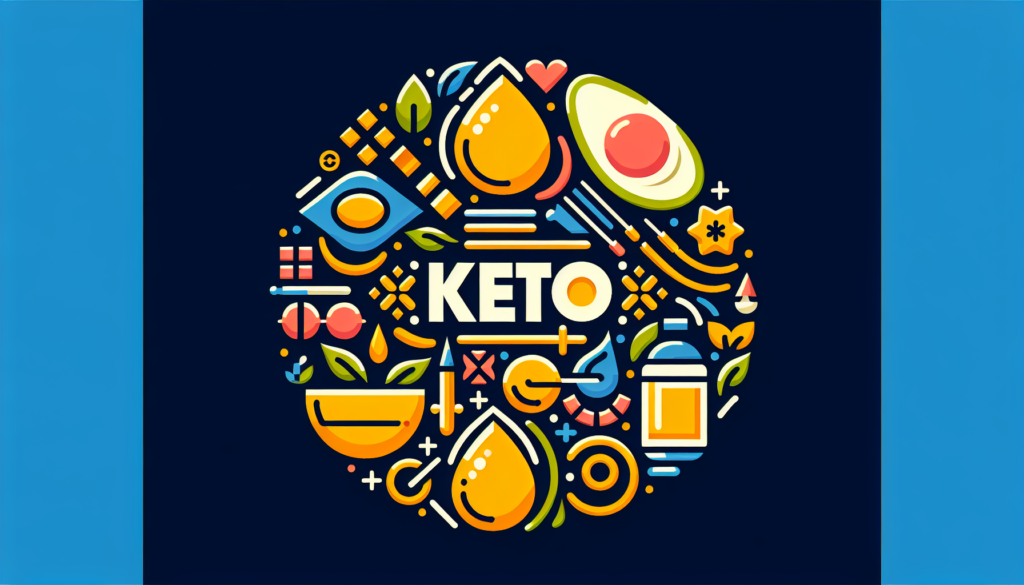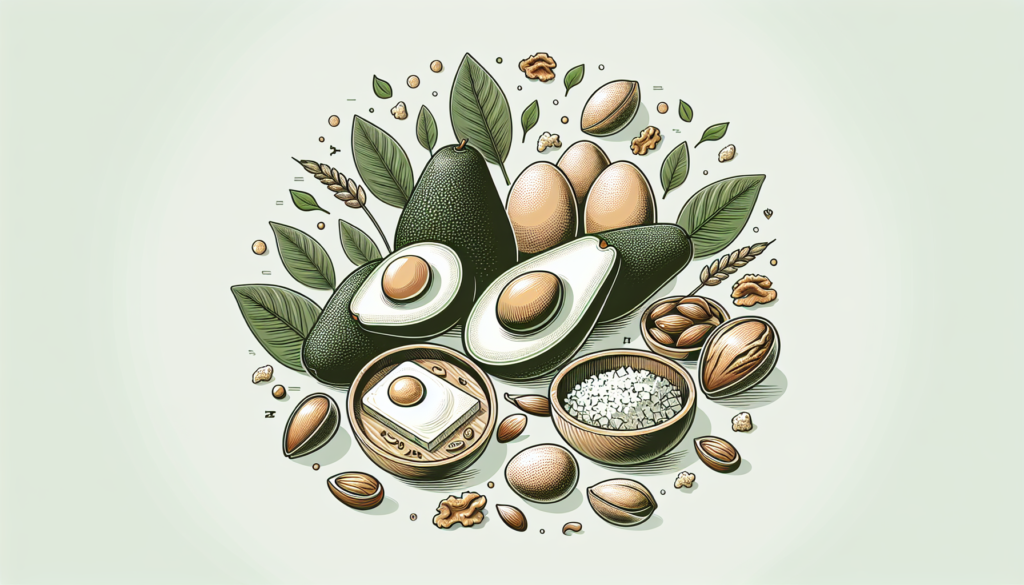In today’s health-conscious world, you may have come across the term “Keto Diet Plan” and wondered what it entails. Well, fret no more! This article is here to shed some light on this popular dietary trend. The Keto Diet Plan is a low-carb, high-fat diet that aims to achieve ketosis, a metabolic state where your body burns fat for energy instead of carbohydrates. By restricting carbohydrate intake and increasing healthy fats, this diet can help you achieve weight loss and numerous health benefits. Curious to know more about the ins and outs of the Keto Diet Plan? Keep reading!
What is the Keto Diet Plan?
The Keto Diet, short for ketogenic diet, is a low-carbohydrate, high-fat eating plan that has gained popularity in recent years. It focuses on drastically reducing carbohydrate intake and replacing it with fats. This reduction in carbs puts your body into a metabolic state called ketosis, where it is primarily burning fat for fuel instead of carbohydrates. It has been widely used as an effective strategy for weight loss, managing certain medical conditions, and improving overall health.
Overview of the Keto Diet
The Keto Diet is often described as a low-carb, high-fat, and moderate-protein diet. By strictly limiting your carbohydrate intake, typically to around 20-50 grams per day, your body starts to deplete its glycogen stores. Once your glycogen stores are depleted, which usually takes a few days, your body enters ketosis. In this state, your liver breaks down fats into molecules called ketones, which become the main source of fuel for your body and brain.

How Does the Keto Diet Work?
The Keto Diet works by shifting your body’s metabolism from relying on carbohydrates for energy to using fats. When you consume fewer carbohydrates, your insulin levels decrease, and your body turns to fat stores for fuel. This process helps you burn fat more efficiently and leads to weight loss. Additionally, ketones produced during ketosis have numerous health benefits, such as providing a more stable source of energy, reducing inflammation, and improving mental clarity.
Benefits of the Keto Diet
The Keto Diet offers several benefits beyond weight loss. One of the primary advantages is improved insulin sensitivity. By reducing carbohydrate intake, the Keto Diet can help regulate blood sugar levels and potentially reverse insulin resistance, making it a potential therapeutic approach for individuals with type 2 diabetes. Additionally, research suggests that the Keto Diet may enhance heart health, increase HDL (good) cholesterol, and decrease triglyceride levels.
Moreover, many people experience enhanced mental focus and clarity when following the Keto Diet. This is because ketones serve as a more efficient and stable energy source for the brain compared to glucose. Some studies have also shown potential benefits of the Keto Diet in reducing seizures in individuals with epilepsy and improving symptoms in certain neurological disorders like Alzheimer’s disease and Parkinson’s disease.

Potential Risks and Side Effects
While the Keto Diet can have numerous benefits, it’s important to be aware of its potential risks and side effects. One of the most common side effects is the “keto flu,” which occurs during the initial transition to ketosis. Symptoms may include fatigue, dizziness, irritability, and digestive issues. These symptoms are usually temporary and can be managed by staying hydrated, consuming enough electrolytes, and gradually reducing carbohydrate intake.
Another potential risk of the Keto Diet is nutrient deficiencies. By cutting out major food groups like grains, fruits, and some vegetables, it can be challenging to consume adequate amounts of essential nutrients, such as fiber, vitamins, and minerals. Proper meal planning and supplementation are crucial to ensure you meet your nutritional needs.
Moreover, the Keto Diet may not be suitable for everyone, particularly individuals with certain medical conditions, such as pancreatitis, liver disease, or gallbladder problems. It is always recommended to consult with a healthcare professional before starting any new diet, especially if you have pre-existing health conditions or take medication.
Different Variations of the Keto Diet
There are several variations of the Keto Diet, each with different macronutrient ratios and goals. The standard ketogenic diet (SKD) typically consists of 75% fat, 20% protein, and 5% carbohydrates. It is the most common and widely recommended version of the Keto Diet. Another popular variation is the cyclical ketogenic diet (CKD), which involves alternating between periods of strict ketosis and higher-carb refeeding days.
The targeted ketogenic diet (TKD) allows for a small amount of carbohydrates to be consumed around workouts to support athletic performance. Finally, the high-protein ketogenic diet (HPKD) incorporates a higher protein intake while still maintaining a low-carb and high-fat approach.
The choice of which variation to follow depends on individual goals, lifestyle, and preferences. It is important to experiment and find the approach that works best for you.
Foods to Eat on the Keto Diet
The Keto Diet focuses on consuming foods that are low in carbohydrates but high in healthy fats. These include:
- Fatty meats like beef, pork, and lamb
- Poultry, such as chicken and turkey
- Fish and seafood
- Eggs
- Full-fat dairy products like cheese, butter, and heavy cream
- Healthy oils like olive oil, coconut oil, and avocado oil
- Nuts and seeds
- Low-carb vegetables like spinach, kale, broccoli, and cauliflower
It’s essential to choose quality sources of fats and proteins while keeping carbohydrate intake to a minimum. Remember to read food labels carefully, as many processed foods contain hidden sugars and carbohydrates that can hinder progress on the Keto Diet.
Foods to Avoid on the Keto Diet
To achieve and maintain ketosis, it is necessary to steer clear of high-carbohydrate foods and beverages. Here are some foods to avoid on the Keto Diet:
- Grains and grain-based products like bread, rice, pasta, and cereal
- Sugary treats and desserts, including cakes, cookies, and candies
- Fruits and fruit juices (except for small portions of berries)
- Legumes, such as beans, lentils, and chickpeas
- Starchy vegetables like potatoes, corn, and peas
- Most condiments and sauces that contain added sugars or unhealthy fats
- Sugary beverages, including soda, fruit juice, and sweetened tea or coffee
By eliminating these high-carb foods from your diet, you can maintain a state of ketosis and reap the benefits of the Keto Diet.
Meal Planning on the Keto Diet
Meal planning is crucial when following the Keto Diet to ensure your meals are well-balanced and aligned with your macronutrient goals. Here are some tips for effective meal planning on the Keto Diet:
-
Calculate your macronutrient requirements: Use a keto calculator to determine your ideal daily intake of fat, protein, and carbohydrates. This will serve as a guideline for planning your meals.
-
Focus on whole, unprocessed foods: Choose nutrient-dense options like grass-fed meats, wild-caught fish, organic vegetables, and healthy fats. These provide the most benefits and support overall health.
-
Incorporate a variety of fats: Include different sources of healthy fats in your meals, such as avocados, nuts, seeds, and oils. This will help provide a balanced profile of essential fatty acids.
-
Prepare meals in advance: Consider batch cooking or meal prepping to save time and ensure you always have keto-friendly options on hand. This can be especially helpful for busy individuals or those with a hectic schedule.
-
Stay hydrated: Remember to drink plenty of water throughout the day, as the Keto Diet can increase the risk of dehydration due to lower carbohydrate intake.
-
Seek professional guidance: If you’re unsure about meal planning or need personalized advice, consult a registered dietitian or nutritionist who specializes in the Keto Diet to help you create a tailored plan.
By following these tips, you can simplify your meal planning process and maintain a successful Keto Diet.
Tips for Success on the Keto Diet
Successfully adopting and maintaining the Keto Diet requires commitment and discipline. Here are some tips to increase your chances of success:
-
Educate yourself: Take the time to thoroughly understand the principles and science behind the Keto Diet. This knowledge will help you make informed choices and stay motivated.
-
Plan and track your meals: Keep a food diary or use a mobile app to track your daily intake of macros. This will help you stay accountable and make adjustments if needed.
-
Don’t be afraid of healthy fats: Embrace the concept of healthy fats being a mainstay of your diet. Including sufficient fats will keep you satiated, satisfy your taste buds, and provide essential nutrients.
-
Prepare for the keto flu: Be aware that you may experience mild symptoms during the initial transition to ketosis. Combat them by staying hydrated, consuming electrolytes, and allowing your body time to adjust.
-
Find support and accountability: Join online keto communities or connect with friends and family who are also following the diet. Sharing your successes and challenges with others can provide valuable support.
-
Prioritize sleep and stress management: Adequate sleep and stress reduction are crucial for overall health and weight management. Implement strategies like creating a bedtime routine or engaging in stress-reducing activities to support your keto journey.
Remember, the Keto Diet is not a quick fix but a long-term lifestyle change. Be patient with yourself and allow your body to adapt gradually.
A Sample Keto Diet Meal Plan
To give you an idea of what a day on the Keto Diet may look like, here’s a sample meal plan:
-
Breakfast: Scrambled eggs cooked in coconut oil with spinach and cheese. Enjoy a side of avocado slices and a cup of black coffee.
-
Snack: A handful of mixed nuts (almonds, walnuts, and macadamia nuts).
-
Lunch: Grilled salmon served with a side of roasted broccoli and cauliflower drizzled with olive oil.
-
Snack: Celery sticks with almond butter.
-
Dinner: Baked chicken thighs seasoned with herbs and served with a side of sautéed zucchini noodles in garlic-infused olive oil.
-
Dessert: A small portion of sugar-free dark chocolate.
Remember, this is just a sample meal plan, and you can customize it based on your preferences and nutritional requirements. Experiment with different recipes and ingredients to keep your meals enjoyable and varied.
In conclusion, the Keto Diet is a low-carbohydrate, high-fat eating plan that can help you achieve weight loss, improve various health markers, and enhance mental clarity. However, it’s essential to consider the potential risks and side effects, follow proper meal planning, and seek professional guidance if needed. By adopting a well-rounded approach and making sustainable lifestyle changes, you can successfully embark on and thrive with the Keto Diet.

Hi! My name is Linda, and I’m a health and fitness specialist. I’m passionate about helping people live their healthiest and happiest lives. In my articles I share my knowledge and experience on all things health and fitness. With a passion for writing and a deep understanding of the health and fitness landscape, Linda has established herself as a trusted authority in the field.